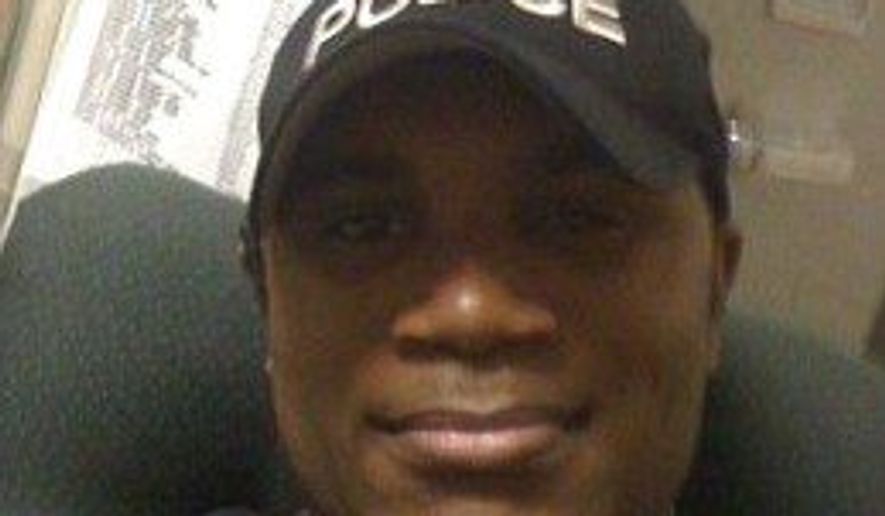A two-year-old case involving the shooting death of an unarmed 18-year-old white man by a black police officer is gaining attention on social media in the wake of this week’s protests and rioting in Ferguson, Missouri.
Gilbert Collar, a white, unarmed 18-year-old under the influence of drugs was shot and killed Oct. 6, 2012, by Officer Trevis Austin, who is black, in Mobile, Alabama. Despite public pressure for an indictment, a Mobile County grand jury refused to bring charges against Officer Austin, concluding that the officer acted in self-defense.
The circumstances mirror those of the Aug. 9 shooting death of Michael Brown, a black unarmed 18-year-old under the influence of drugs by Officer Darren Wilson, who is white, in Ferguson.
A St. Louis County grand jury’s decision Monday not to indict the officer ignited violence and looting in Ferguson and days of protests nationwide against racial injustice.
The discrepancy in the reaction to and coverage of the two grand jury decisions has not been lost on social media, where critics are citing the Collar case to counter those who say Brown was the victim of racism in both law enforcement and judicial system.
On Thursday, the website Conservative Tribune headline trumpeted the case: “Unarmed White Teen Gunned Down by Black Cop … Where’s the Outrage?”
SEE ALSO: Legal scholars praise Ferguson grand jury for fairness beyond the norm
Former CNN host Piers Morgan blasted the police response in Mobile days after Collar was killed, saying he “didn’t deserve to die,” but otherwise the case has received little attention outside Alabama, prompting critics to accuse the national media of a “whiteout.”
Said Julie on Twitter: “Hello? Media? Two years, and still only crickets. Where’s Al Sharpton for #GilCollar?”
Critics also note there has been no rioting or sustained protest in Mobile, even though the slightly built Collar, unlike Brown, never touched the officer and, because he was naked when he was shot, was more obviously unarmed.
Both shooting victims were found with marijuana in their systems.
“There’s riots for #MikeBrown but none for #GilCollar,” said one commenter, @samstuff, in a Wednesday post on Twitter.
“Nobody burnt buildings to the ground for them,” said commenter Gomer Pyle on Twitter, referring to Collar and Dillon Taylor, a white 20-year-old shot Aug. 11 by a minority police officer in Utah. “You never even heard of them until now.”
PHOTOS: Stunning scenes of violence in Ferguson
Others have pointed to the cases as evidence that police are routinely using excessive force against young men no matter what their race.
“To those of you who called #MikeBrown a thug please reconsider your stance on the issue now that the thug is a white male, who the system failed as well!” said India Washington on Instagram.
In what may be a sign of things to come in the Brown case, parents Bonnie and Reed Collar filed a wrongful-death lawsuit against the officer in July.
An earlier lawsuit named the university and Police Chief Zeke Aull, but courts ruled that both had legal immunity, leaving Officer Austin as the sole defendant.
Collar was a freshman at the University of South Alabama when he ingested two hits of the synthetic drug 25-I, a hallucinogen, which caused him “either to become extremely hot or to believe that he was very hot,” according to the original complaint filed in federal court in Mobile County.
“Gilbert Collar lost the ability to fully understand his actions and to reason,” says the complaint. “As a result, Gilbert Collar took off his clothes and began running into and out of traffic on the campus of the University of South Alabama.”
Mobile County District Attorney Ashley Rich described Collar’s erratic behavior at a March 2013 press conference after the grand jury issued its decision.
She said the student ran in the direction of the campus police department, rambling incoherently and at one point attempting to climb into a car over the driver.
Collar also tried to bite the driver while the vehicle’s passenger, a former university football player, punched him repeatedly in the face.
Although Collar was just 5-feet-7 and 135 pounds, the blows “didn’t faze him,” Ms. Rich said at the press conference, a video of which was posted on AL.com.
When he arrived at the police station, Collar began banging on the outside windows, then walked in the general direction of Officer Austin, who had his gun drawn.
The officer shot Collar in the chest while he was still several feet away, according to reports based on a surveillance video.
“At no point during the ensuing moments did Gilbert Collar ever touch Officer Austin. On one or more occasions, Gilbert Collar went to the ground and put distance between himself and Officer Austin,” the complaint said.
“Officer Austin had ample opportunity to obtain his baton and pepper spray, to holster his weapon and to use his own physical abilities, if necessary, or to prolong the situation and wait for back up to arrive.”
Ms. Rich stressed that Collar, a former high school wrestler, was “an outstanding member of his community,” but that “the drug that was taken produced conduct that caused Gil Collar’s death.”
The Collars have said that any damages awarded would be used to fund a scholarship. Officer Austin, whose attorney has declined to comment on pending litigation, was reinstated on the police force after the grand jury refused to indict him on any criminal charges.
• Valerie Richardson can be reached at vrichardson@washingtontimes.com.




Please read our comment policy before commenting.